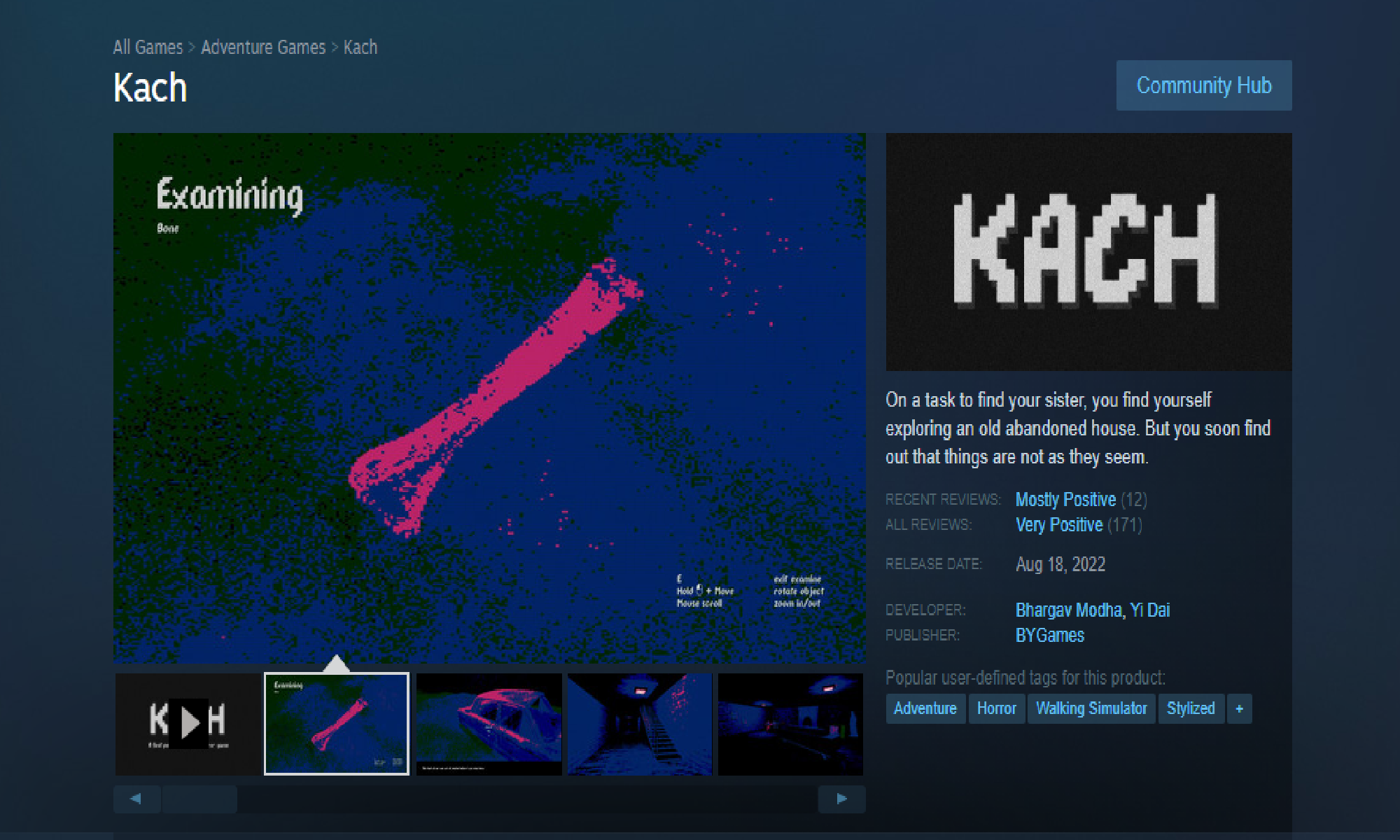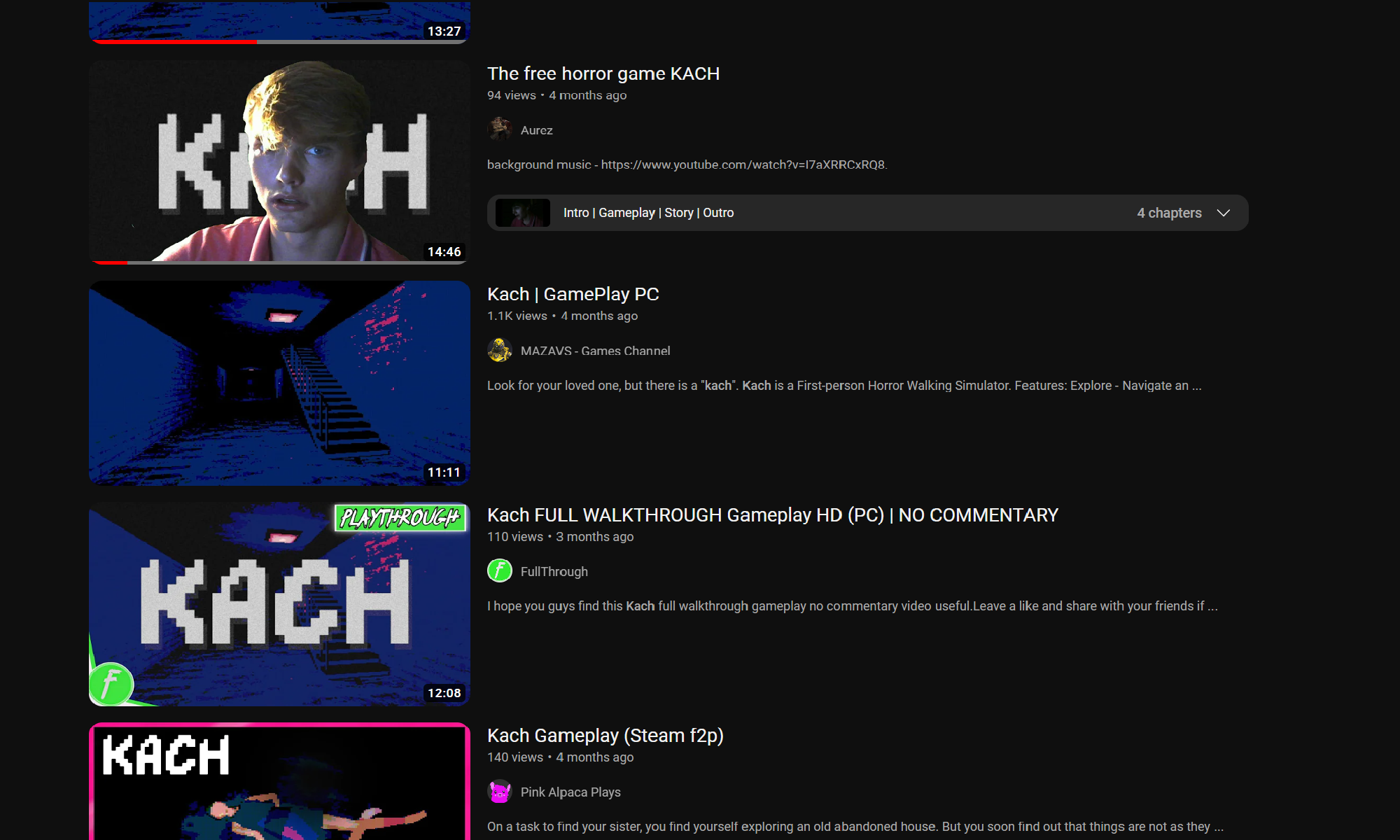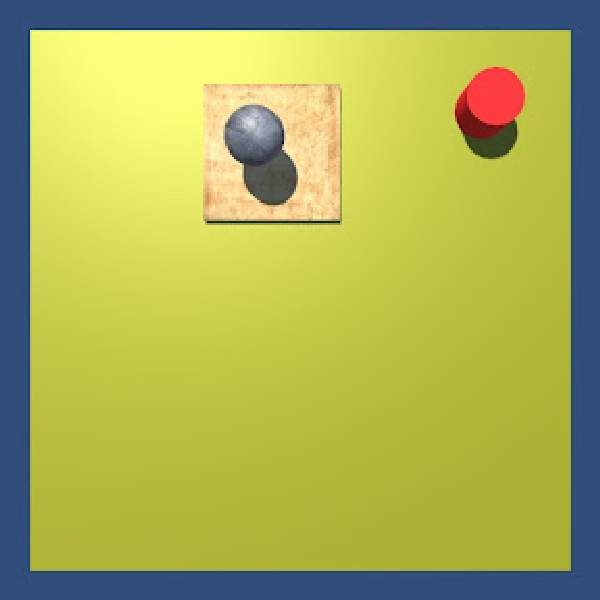
Kach
Details
- Engine/Platforms: built in Unity for PC & Mac, available on Steam and Itch.io
- Team Size: 2
- Duration: 3.5 months
- Tools Used: Unity, C#, Perforce
- Role: Game Designer, Engineer, Writer
Overview
Kach is a First-person Horror Walking Simulator where you look for your missing sister and explore an abandoned house. You will interact and examine interesting objects and unveil the mysterious history of this house.
Inspired by the video series called “The Mandela Catalogue” and games such as SOMA and Amnesia, the game provides an immersive experience where the player can investigate a world featuring a pixelated monochromatic art style.
My Role - Game Designer, Engineer, Writer
- Designed and implemented game concepts & core mechanics
- Designed and implemented game concepts & core mechanics
- Made quick iterations for multiple ideas.
- Implemented the examine mechanic system.
- Implemented the player controller’s camera motion, stamina system, and usable item system.
- Designed and implemented the “moving statue”.
- Designed levels and arranged interactable items
- Found free online assets to populate the world with environmental and interactable assets.
- Conducted formal playtests
- Wrote post-playtest surveys.
- Recorded players’ behaviors and gathered player metrics.
- Recruited an Artist
- Reached out and connected with an art student from Otis College of Art and Design for extra 2D and 3D art support.
Making of the Interaction System
Kach's core mechanic is interacting with and examining objects in the environment. I prototyped and completely developed the game's interaction and examination system. This system allows the player to interact with objects to trigger narrative, examine certain objects by being able to rotate and zoom in/out of the objects. It allows special interactions such as picking up the flashlight, reading texts on journals, and opening doors.
This system handles all 32 environmental object interactions and 6 unique interactions in the game.
Ambient Elements to Enhance Atmosphere
While Kach's unique art style set a great atmosphere, I thought adding some ambient elements would further enhance the horror feel we wanted to achieve. We wanted to avoid cheap jump scares.
Some of the ambients elements I designed and implemented were the flickering TV and the teleporting statue. Both added juice to the game. The one I am proud of the most is the teleporting statue. I found a cool statue model online and I put it in the scene. At first it was just standing at one place. Then I thought why not teleporting (moving) the statue to different places after certain moments. It turned out to be a great addition to the game. Not only it strongly enhanced the horror atmosphere, the teleporing statue also added depth to the narrative, leading many players speculating online. The statue became the memorable symbol of the game.
Prototype Iterations
Kach all started from the prototypes my partner and I created and iterated upon. We iterated on prototypes six times in total, three each. We created and tested them with playtesters in three weeks, they were quick and effective for us to test different ideas and narrow down the game’s direction.
We first experimented with the idea of developing a walking simulator where the player could interact with different objects to figure out puzzles. In the beginning, we were also inspired by the 2D game “Papers, Please.” To test a similar game mechanic, my first prototype let the player see from a top-down view of a table on which they could interact with three different objects. Creating prototypes as toys and not games, I made this a full-physical environment where the three objects can collide and trigger different results.
While ultimately Kach did not have a similarly fully physical environment, this prototype set a great foundation for our examine mechanic.
For my second prototype, I built upon my previous one, and tried to establish a “bad version” of a horror atmosphere. I tested two different creepy visual effects. I also unlocked the camera from being fixed (as we were leaning more toward making a walking simulator). The player now could also rotate objects (a feature kept in the end). I also added a cheesy jump scare that would be triggered after the player flipped the wooden board object.
This prototype was quick and basic, but it provided us with much valuable information. It inspired us to make a horror game with a unique art style.

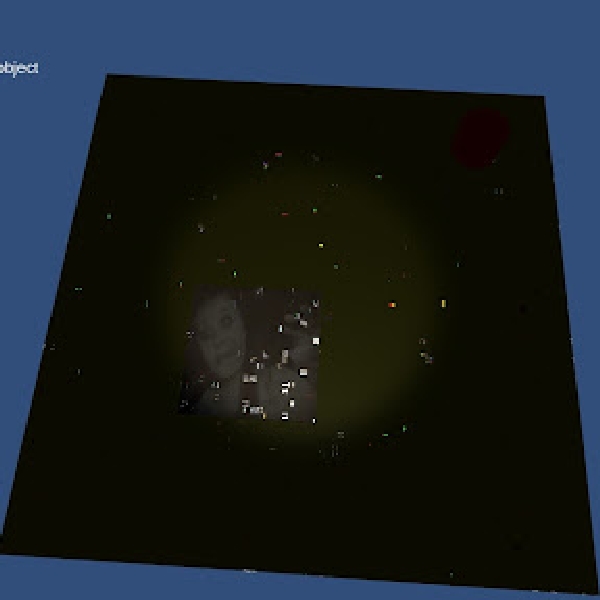
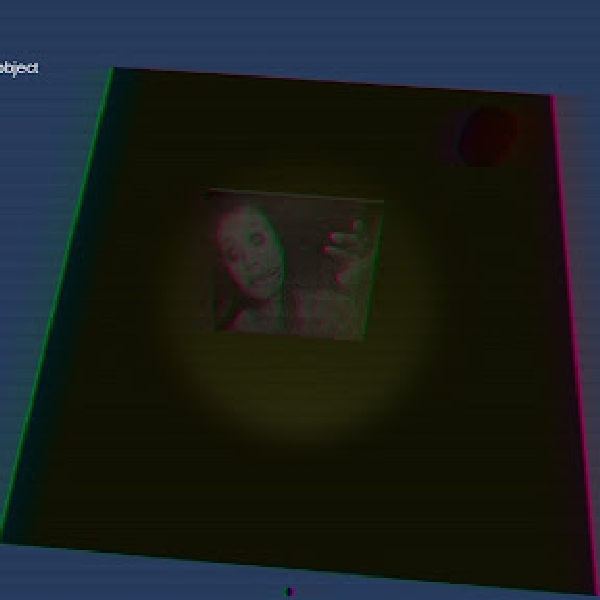
My third and last prototype turned in a different direction compared to my last two. At this point, we have decided that our project would be a First-person horror game where you play as a PERSON. What if you are not a person? To answer this question of mine, I built a 3D greybox level and the character controller had the ability to fly (like a flappy bird). In addition, I experimented with a new visual effect which surprisingly felt futuristic (we did want to have the game set in a sci-fi world).
Its visual effect and character controller gave us new perspectives on how the game could work and feel.
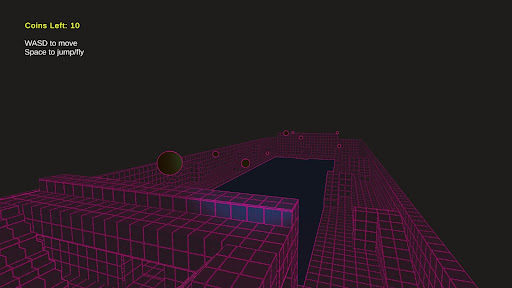
Pre-Production
During pre-production, we used the Concentric Development approach, first focusing on working on our 3C’s (Character, Control, Camera). We polished our character controller to a high degree very early on. I implemented a stamina system for running as well as its head bob motion that also adjusts between walking and running. Some challenges we faced were refining the transitions between different breathing states (running, stop running but not exhausted, stop running and exhausted) and optimizing camera sensitivity.
Implementing a robust character controller was a highlight of this project. Being able to polish it nicely early in development set a strong foundation for other feature implementations, making life much easier.
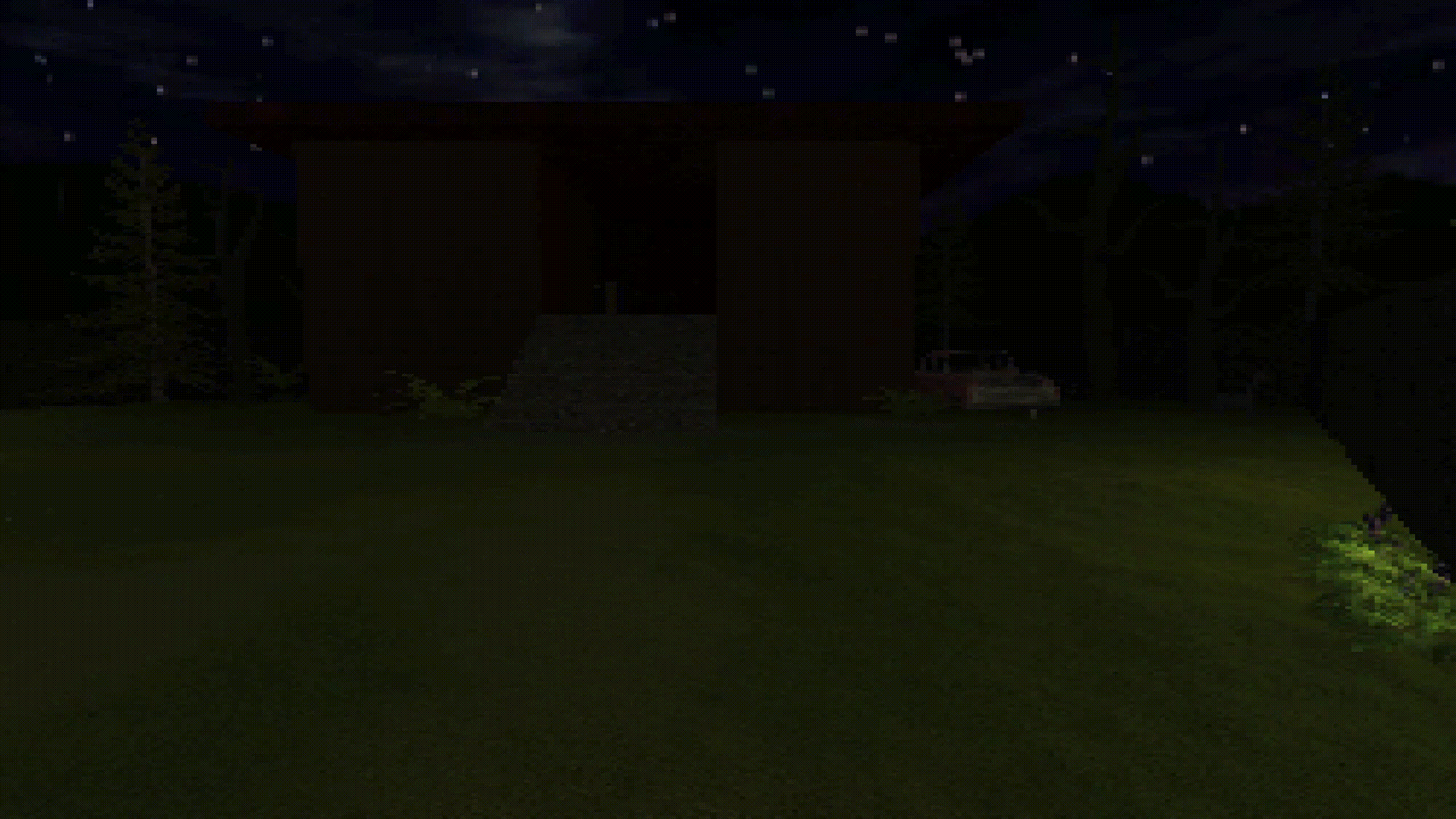
Since the beginning, I had been in charge of the examine mechanic. Our plan was to have the player able to focus on a specific object, rotate it, and zoom in & out. Making it work was not hard, but it was challenging to make it work well. One challenge I faced during pre-production was achieving the visual effect of blurred background during examination (to make the object selected more focused). My mechanic implementation conflicted with the game’s shader graph which modifies the screenspace globally. It prevented different cameras from having separate post-processing effects. Because of other production priorities, I was unable to resolve it. We had to give up on this little visual polish (luckily it was not an issue to players).
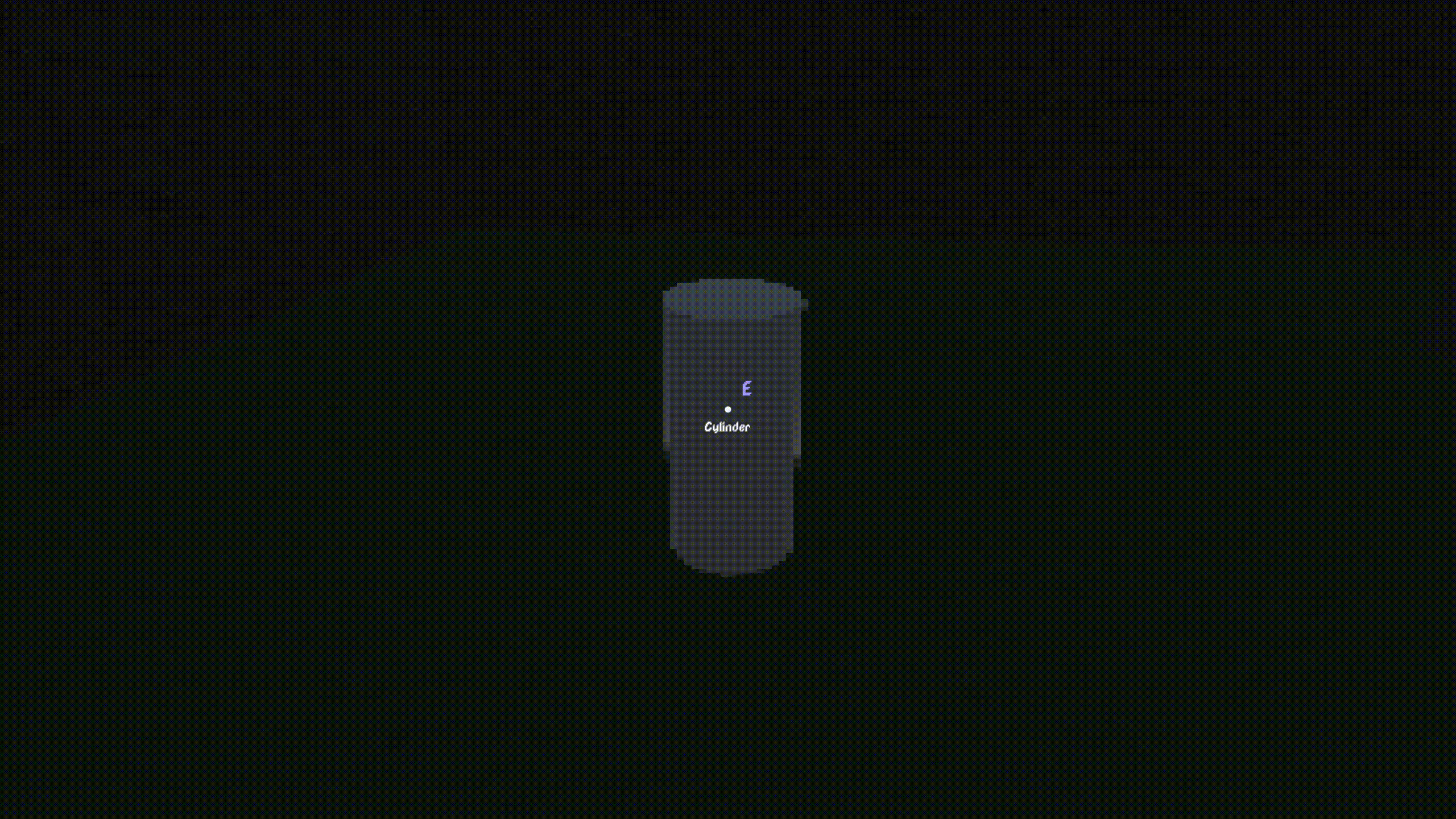
We held outside playtests since prototyping. Playtests were always helpful. Even though we didn’t listen to every suggestion, players provided fresh eyes on our game. We had usability and accessibility in mind early since pre-production. After evaluating feedback and discussing it with each other, we frequently adjusted the environment and added more player options to improve immersion and accessibility.
Full Production
I fell in love with production tools such as burndown charts during the full production of Kach. Working in sprints, my partner and I always planned and assigned tasks along with their priorities and time estimation. With the clarity it provided, we were always on top of our schedule. Spreadsheets were our best friends. We also composed other spreadsheets such as an asset sheet for all asset tracking and a bug tracker. While our team structure made production much easier than a bigger team, the use of spreadsheets in Kach gave me valuable experience in how to organize game production. It helped me tremendously in my future projects.
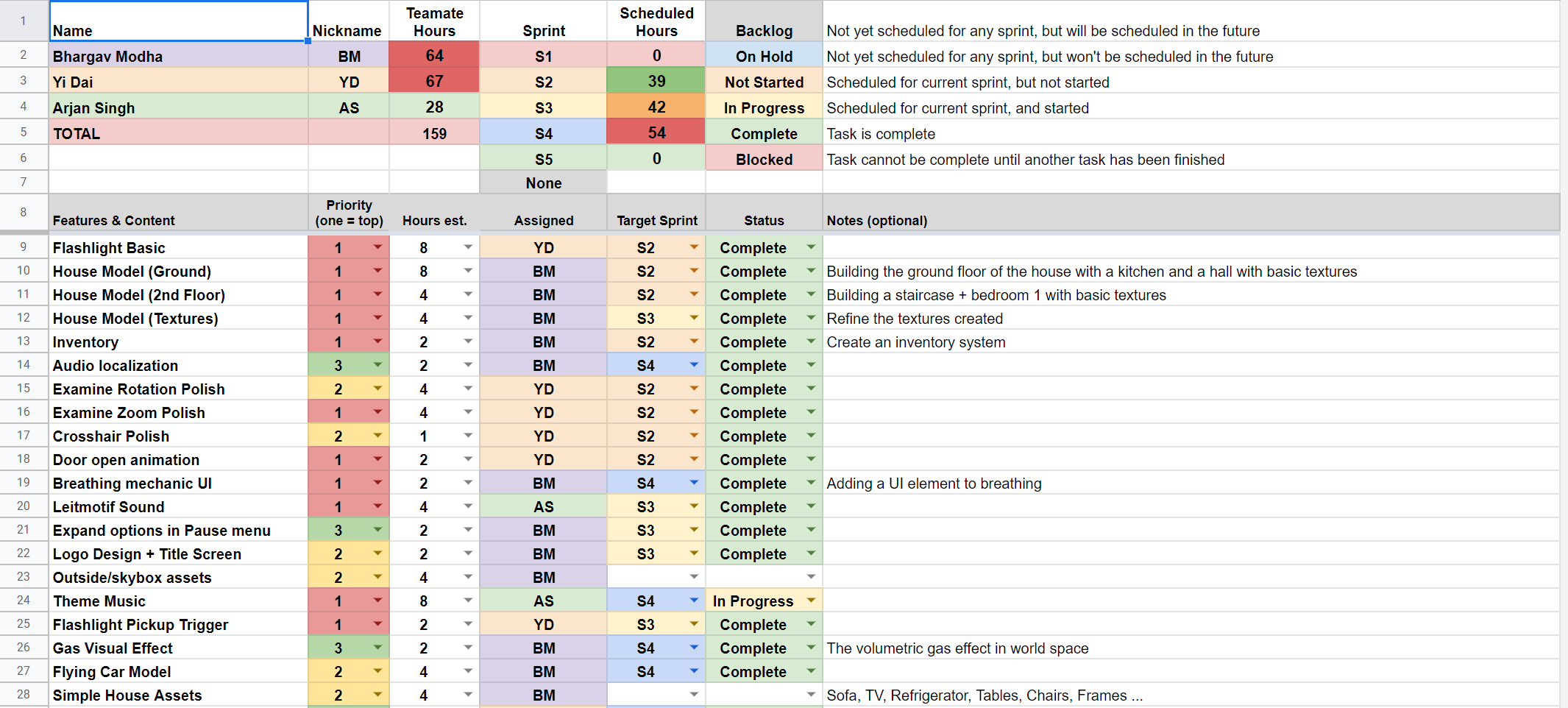
During the second week of full production (Alpha phase), we accidentally found a new “crazy” aesthetic of the game when we were randomly testing our shader’s parameters. We instantly fell in love with the pixelated monochromatic feel and decided to go with that. It turned out to be the right choice. It was a great lesson for me because I was afraid that it was too late to make such a dramatic overhaul during full production. While it is not recommended, I learned that there could be “wild cards.” Even during full production, we should always stay alert on opportunities that could radically transform the design of our game for the better. With enough caution, we can know when to take a risk.
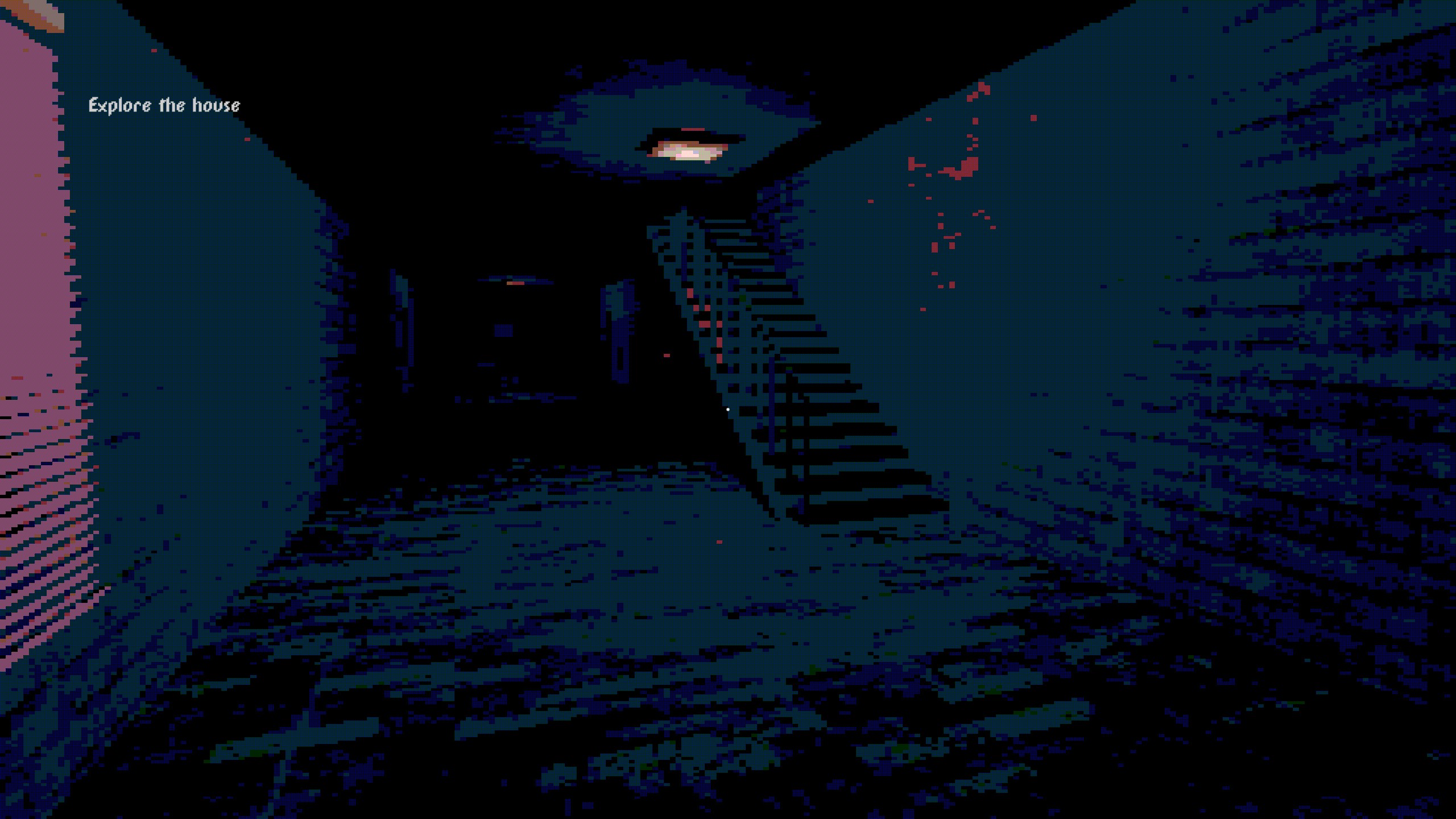
I was extremely proud of the great production Kach had. The game in the end was on schedule for publishing with great polishing. We knew when to stop adding new features and focus on making what we already had better.
We soon published Kach on Steam, and it quickly received many positive reviews and gained traction on YouTube as it was played by players worldwide.
